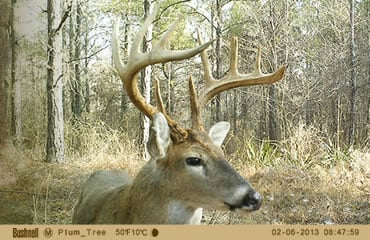Faster is usually better in trail camera statistics, but know what those figures mean.
Let’s wrap up this set of trail camera tips with a discussion about trigger speed and recovery time. Those two terms are often confused or misunderstood by hunters looking to buy a new camera, and you need to know what they mean before you can consider which camera is best for you.
Simply put, trigger time is the delay from when a camera’s PIR sensor detects a heat source to when the camera takes the picture. Cameras with longer delays are less expensive, but a longer delay means you can miss a deer or get the back end of a deer, especially on cameras placed along trails. Cameras overlooking food sources can get away with longer trigger times since deer are more stationary.
Recovery time, meanwhile, is the amount of time it takes for a camera to be ready to take another photo after taking an initial photo. Let’s say a buck is trailing a few yards behind a doe, and she walks by your camera and triggers a photo. If your camera’s recovery time is too long, you might not get a picture of the buck. You might or might not see him in the background, but it would be best to have a nice, crisp image of the buck. Just like trigger speed, cameras with longer recovery times are less expensive.
For the best performance, cameras with a trigger speed under a second are ideal. Cameras with a recovery time of under five seconds or so should allow you to get the pictures you’re looking for.
If you know you’ll be placing your camera on a food source or bait pile, you might not need the best trigger time or recovery speed. Consider how you’ll be using the camera, and if you might be moving it from one location to another, before making your purchase.
Read Recent Tip of the Week:• The Heat of the Moment: Trail camera settings affect performance in high or low temperatures.




.png)